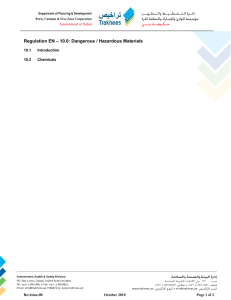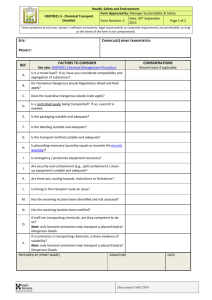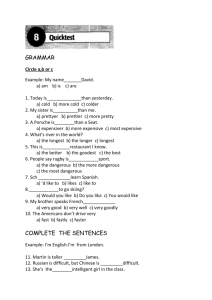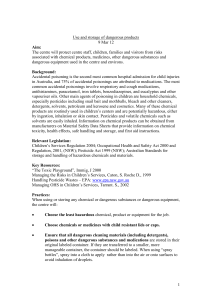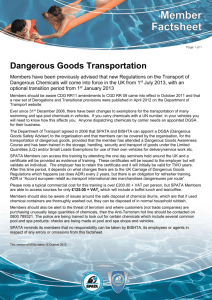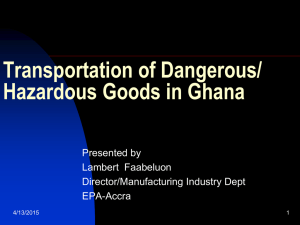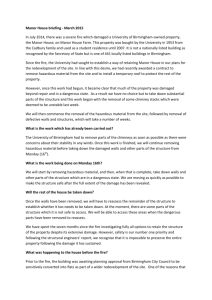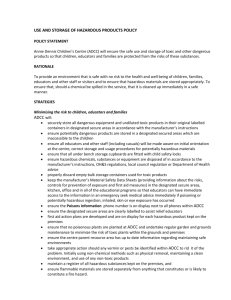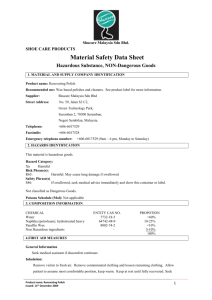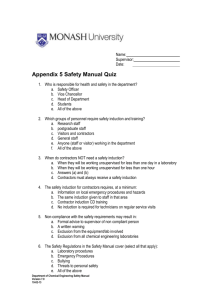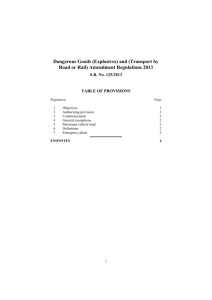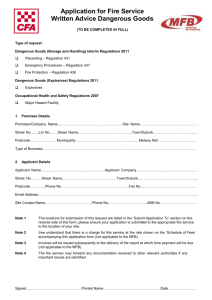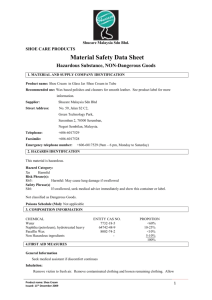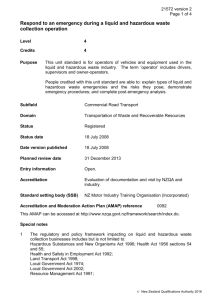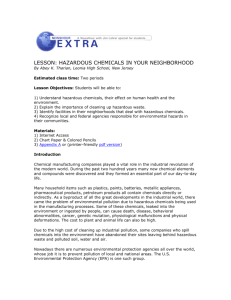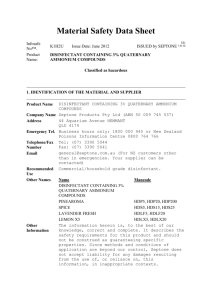Statutory Regulations Related to Hazardous - Hrdp
advertisement
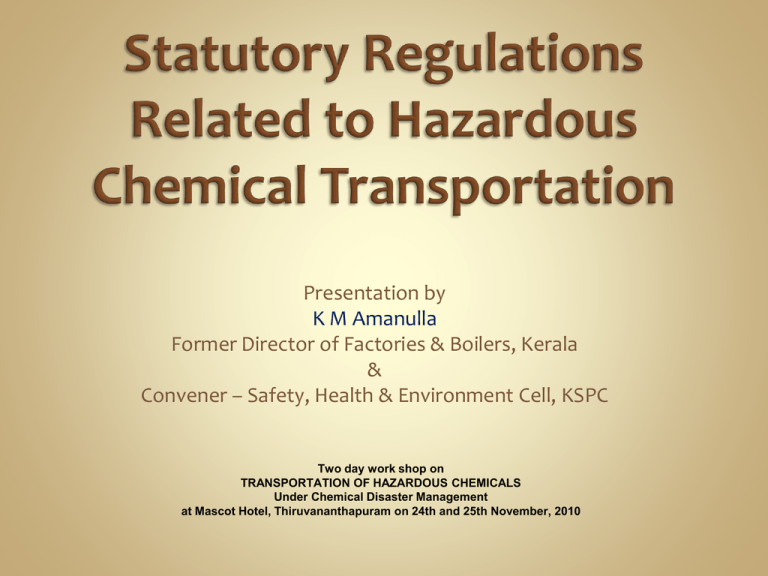
Presentation by
K M Amanulla
Former Director of Factories & Boilers, Kerala
&
Convener – Safety, Health & Environment Cell, KSPC
Two day work shop on
TRANSPORTATION OF HAZARDOUS CHEMICALS
Under Chemical Disaster Management
at Mascot Hotel, Thiruvananthapuram on 24th and 25th November, 2010
Need for Hazardous Chemical
Transportation
Manufactured
at certain
locations –
used at several
locations
Pipeline
transport not
possible for
several such
chemicals
Rail transport
limited to bulk
petroleum
products or
from ports –
gradual shift
towards
pipeline
transport
Road transport
only means for
long distance
transportation
of several
Hazchems
Factors Contributing Hazardous Chemical Transport
Shift from Agri economy to manufacturing base and then to
service oriented
Industrial policy – encouragement for producing locally
R& D contribution – Pharmaceuticals, specialty chemicals, etc.
Bulk imports through marine tankers - onwards transport by
road carriers
Major Accident Hazard Units
Involved in manufacture, storage or import of hazardous
chemicals in excess of the specified threshold planning
quantities (MSIHC Rules)
Need for Hazardous
Chemical Legislations
Damage to :
20% of the
chemical
accidents during
transportation
Photo Gallery
50% of LPG
Accidents happen
during
transportation
Estimated Value
of Social Cost of
Road Accidents
per year – Rs. 2
Lac Crores
Life,
Property,
Environment &
Company’s
Reputation
International Legislations
• Road Transport Reform (Dangerous Goods) Act 1995 and the Road
Transport Reform (Dangerous Goods) Regulations 1997 of Australia
• Transportation of Dangerous Goods Act, 1992 and the Transportation of
Dangerous Goods Regulations of Canada
• The Carriage of Dangerous Goods and Use of Transportable Pressure
Equipment Regulations 2004 ('Carriage Regulations') of UK
• Federal Motor Carrier Safety Regulations (49 CFR Parts 390-397) of USA
International Legislations
• United Nations Economic and Social Council's Committee of Experts have
developed recommendations on the Transport of Dangerous Goods (TDG) known
as the 'Orange Book'.
• Compiled in the form of “Model Regulations on the Transport of Dangerous
Goods”
• They present a basic scheme of provisions that allows uniform development of
national and international regulations governing the various modes of transport.
• Have no legal force in themselves unless the recommendations are adopted into
modal (mode-specific) agreements or domestic legislation.
• The Model Regulations cover principles of classification and definition of classes,
listing of the principal dangerous goods, general packing requirements, testing
procedures, marking, labelling and transport documents.
• Many of the developed countries have harmonized their legislation as per UN
recommendations on TDG and are regularly updating them by amendments.
1.
The Motor Vehicles Act, 1988
•The Central Motor Vehicles Rules, 1989
2.
The Environment (Protection) Act, 1986, amended 1991
•Manufacture, Storage and Import of Hazardous Chemical Rules, 1989 amended 2000
•Chemical Accidents (Emergency Planning, Preparedness and Response) Rules, 1996
3.
Public Liability Insurance Act, 1991 amended 1992
•Public Liability Insurance Rules, 1991 amended 1993
4.
The Petroleum Act, 1934
•The Petroleum Rules, 2002
5.
The Explosives Act, 1884
•The Explosives Rules, 1983
•The Gas Cylinder Rules, 2004
•The Static and Mobile Pressure Vessels (Unfired) Rules, 1981

